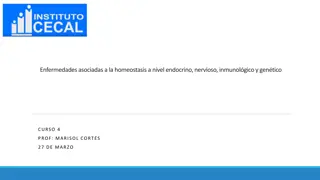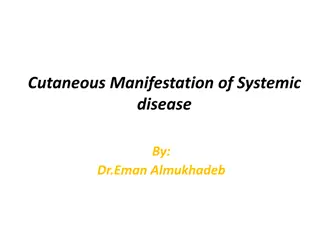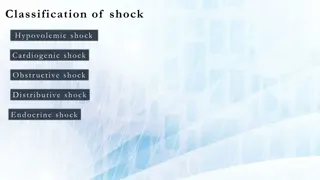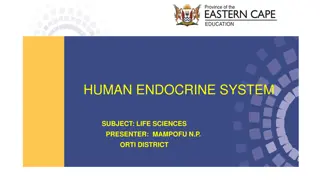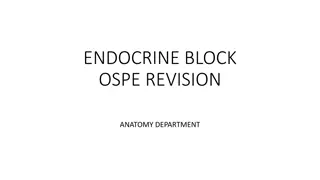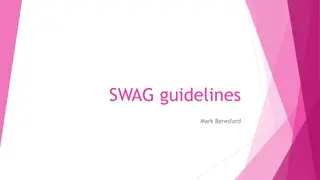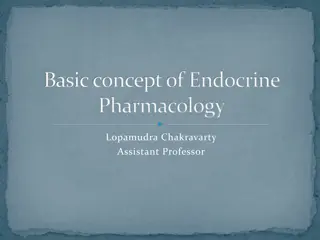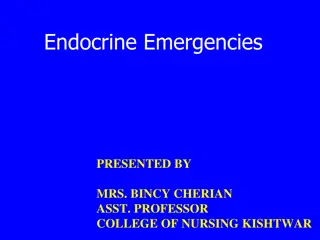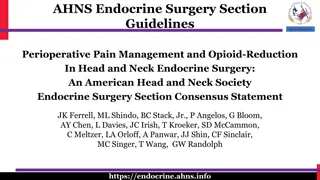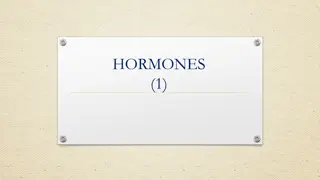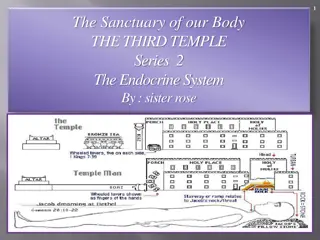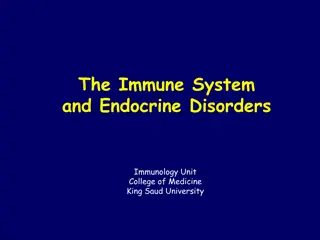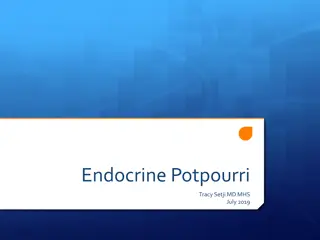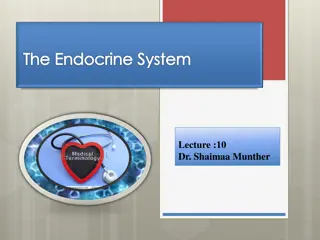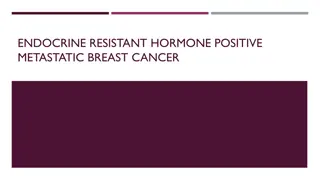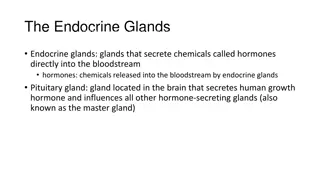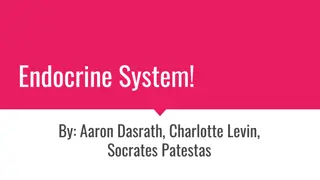Overview of the Human Endocrine System
This presentation covers the terminology, differences between exocrine and endocrine glands, the location and functions of various glands in the endocrine system, and general information on how hormones coordinate the body's organs to maintain homeostasis.
Download Presentation

Please find below an Image/Link to download the presentation.
The content on the website is provided AS IS for your information and personal use only. It may not be sold, licensed, or shared on other websites without obtaining consent from the author.If you encounter any issues during the download, it is possible that the publisher has removed the file from their server.
You are allowed to download the files provided on this website for personal or commercial use, subject to the condition that they are used lawfully. All files are the property of their respective owners.
The content on the website is provided AS IS for your information and personal use only. It may not be sold, licensed, or shared on other websites without obtaining consent from the author.
E N D
Presentation Transcript
HUMAN ENDOCRINE SYSTEM 1 For each section please read theexam guidelines first before going on to the content. Learn all the content in this presentation ASSET TUTORING REVISION 2020
Introduction Terminology: Gland an effector organ that secretes a useful substance. Endocrine gland an organ that secretes hormones into the bloodstream Exocrine gland an organ that secretes enzymes, bile or sweat into a duct leading to another gland where that secretion will function Hormone a chemical messenger secreted by an endocrine gland which travels to a target organ/area by the bloodstream Target organ a place in the body where a hormone functions (could be an effector organ) Negative feedback mechanisms operate in the human body to detect the changes in the factors and to restore the balance of these factors either by lowering or raising levels back to normal
Difference between exocrine and endocrine glands Endocrine glands have no ducts whereas exocrine glands have ducts 1. Endocrine glands secrete hormones whereas exocrine glands secrete enzymes or sweat or bile or saliva or tears 2. Endocrine glands secrete hormones into the blood whereas exocrine glands secrete enzymes or sweat or bile or tears or saliva into a duct Similarities between exocrine and endocrine glands 3. They both secrete substances that are useful in the body. The substances usually act outside the gland in another part of the body
Location of each of the following glands, using a diagram, the hormones they secrete and function/s of each hormone: Hypothalamus (ADH) Pituitary/hypophysis (GH, TSH, FSH, LH, prolactin) Thyroid glands (thyroxin) Islets of Langerhans in the pancreas (insulin, glucagon) Adrenal glands (adrenalin, aldosterone) Ovary (oestrogen, progesterone) Testis (testosterone)
ENDOCRINE SYSTEM general information Endocrine system co-ordinates the body s organs to help maintain homeostasis Based on the production of chemical messengers called HORMONES. Hormones control body processes that require several organs of the body to interact for a combined effect. Are chemical "messengers , secreted by glands. Hormones have specific target organs Regulatory effect stimulate OR inhibit Do not function in isolation integrated with other hormones Functions controlled by hormones include: activities of entire organs growth and development (GH) reproduction and sexual characteristics (LH, FSH, progesterone, oestrogen, testosterone) usage and storage of energy (Thyroxin, Adrenalin, Glucagon, Insulin) regulate water content or osmoregulation (ADH) ionic (salt) regulation (Aldosterone) regulation of blood glucose level (Insulin and Glucagon)
Thyroid gland Functions of thyroxin: Increases basal metabolic rate (amount of energy the body needs to function when body is at rest) Increases breathing rate and heart rate Development and functioning of nervous system Normal growth and development of important organs
Pancreas Two types of cells: Pancreatic cells Islets of Langerhans (small groups of cells) Pancreatic cells have an exocrine function and secrete pancreatic juice and enzymes into pancreatic duct which leads to duodenum Islets of Langerhans have an endocrine function and secretes 2 hormones directly into bloodstream i.e. glucagon and insulin Insulin and glucagon are responsible for homeostatic control of blood glucose levels through negative feedback system. Target organ is the liver.
Adrenal glands ADRENALIN: (note similarity to sympathetic NS response) Known as fight or flight hormone Increases heart rate - more blood with oxygen and glucose to muscles Increases blood pressure due to vasoconstriction of vessels in skin- more blood to muscles ,heart and brain Increases conversion of glycogen to glucose increase glucose levels in blood which releases energy Increase rate and depth of breathing and respiration more oxygen absorbed in blood Increase muscle tone muscles can react faster Pupils dilate allow more light into eye for improved vision Increase sweat production cool body during activity ALDOSTERONE: Steroid hormone that regulates ionic balance of tissue fluid/salt concentration in the blood and in the kidneys
Ovaries and Testes Testes located outside body in scrotum Interstitial cells produce hormone testosterone Ovaries located in abdominal cavity, on either side of uterus Developing/Graafian follicles produce hormone oestrogen Corpus luteum produces hormone progesterone
Testes & ovaries TESTOSTERONE Secondary male sex characteristics Role in development of male sex organ during puberty Necessary for maturation and quality of sperm cells OESTROGEN Secondary female sex characteristics Role in development of female sex organs during puberty Responsible for thickening of endometrium and preparation for implantation PROGESTERONE Responsible for further thickening of endometrium and maintenance thereof during pregnancy Inhibits release of FSH and LH


